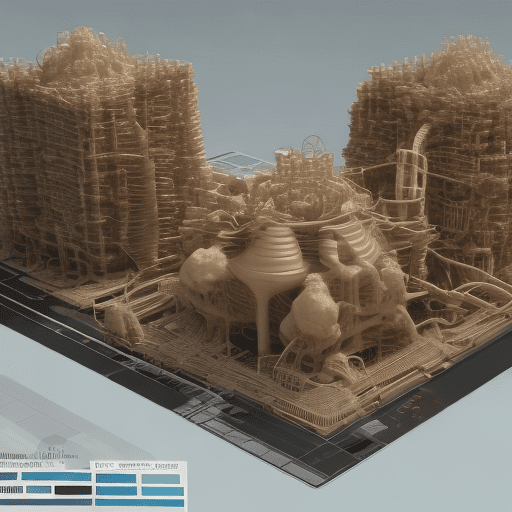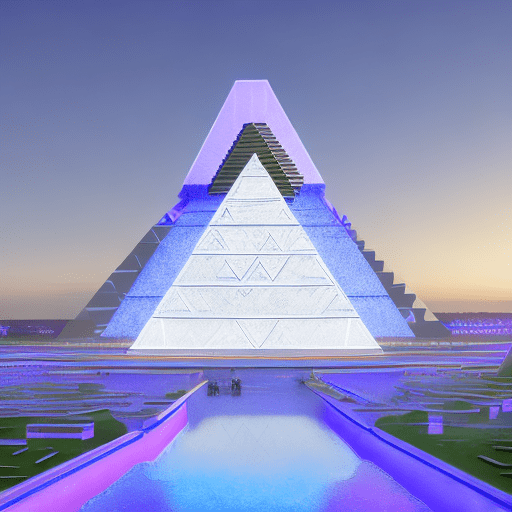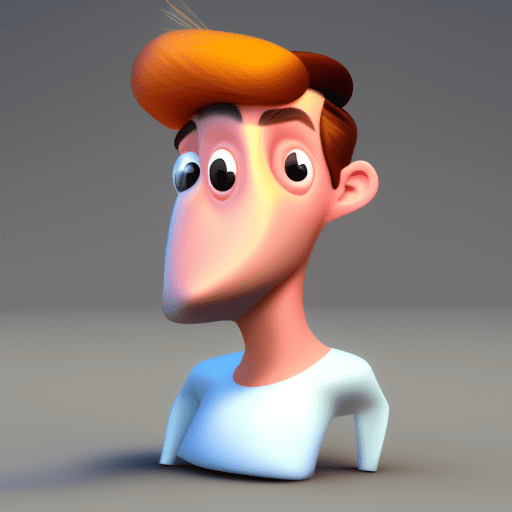Creating a detailed and educational 3D digital model that represents the carbon cycle, focusing on key processes like combustion, photosynthesis, respiration, and decomposition, can offer valuable insights to interested individuals.
The combustion aspect portraying a combustion source such as a factory, a car, or a campfire releasing carbon dioxide (CO2) into the atmosphere, in a visually compelling manner.
Visual cues of CO2 being emitted in the form of gas add a dynamic element to the representation of the combustion process within the model.
Elements like plants (trees, shrubs) absorbing CO2 from the atmosphere or depicting the photosynthesis process through arrows or diagrams enable a clearer understanding of this fundamental process.
Highlighting leaves as the central site where photosynthesis occurs helps viewers comprehend the significance of plant life in the carbon cycle.
Depicting living beings like animals and humans breathing and releasing CO2 into the atmosphere, including details of gas exchange in the lungs contributes to conveying the respiratory process effectively.
Incorporating decomposers like bacteria and fungi breaking down organic matter (fallen leaves, dead animals) and indicating the release of CO2 and methane (CH4) into the atmosphere illustrates the critical role of decomposition.
The model’s design should accommodate brief labels and explanations for each process and its components, aiding in accessibility for a wide range of audiences.
Differentiating colors for each process, for example, using red for combustion, green for photosynthesis, blue for respiration, and brown for decomposition, helps viewers visually associate each stage with its corresponding function.
Ensuring that the virtual representation includes a depiction of the atmosphere surrounding the elements within the model adds context to the carbon cycle narrative.
Rendering the model in high-quality 3D enables viewers to appreciate the complexity and interactions of the various elements and processes from different perspectives, fostering a deeper understanding of the carbon cycle as a whole.
Overall, creating an engaging and informative 3D digital model portraying the detailed processes of the carbon cycle with these elements and features results in an educational tool that can effectively communicate the interconnected nature of the cycle for a general audience interested in comprehending this important environmental process.
Crear una maqueta digital en 3D que represente de manera detallada y educativa el ciclo del carbono, enfocándose en los cuatro procesos clave: combustión, fotosíntesis, respiración y descomposición. La maqueta debe incluir los siguientes elementos y características: Combustión: Representar una fuente de combustión (por ejemplo, una fábrica, un automóvil, o una fogata) liberando dióxido de carbono (CO2) a la atmósfera. Incluir elementos visuales que muestren el CO2 siendo emitido en forma de gas. Fotosíntesis: Incluir plantas (árboles, arbustos, etc.) que absorben CO2 de la atmósfera. Mostrar el proceso de fotosíntesis mediante flechas o diagramas que indiquen la absorción de CO2 y la liberación de oxígeno (O2) . Destacar las hojas como el sitio principal donde ocurre la fotosíntesis. Respiración: Representar seres vivos (animales y humanos) respirando, liberando CO2 a la atmósfera. Incluir detalles como el intercambio de gases en los pulmones o estructuras equivalentes en animales. Descomposición: Mostrar organismos descomponedores (bacterias, hongos) descomponiendo materia orgánica (hojas caídas, animales muertos) . Indicar el proceso de descomposición y la liberación de CO2 y metano (CH4) a la atmósfera. Otros detalles y elementos: Incluir etiquetas y explicaciones breves para cada proceso y sus componentes. Utilizar colores distintivos para cada proceso para facilitar la comprensión (por ejemplo, rojo para combustión, verde para fotosíntesis, azul para respiración y marrón para descomposición) . Incluir una representación de la atmósfera que rodee los elementos de la maqueta. Asegurarse de que la maqueta sea visualmente atractiva y educativa, apta para un público general interesado en entender el ciclo del carbono. Formato final: La maqueta debe ser una imagen 3D de alta calidad. Debe ser posible ver la maqueta desde diferentes ángulos para apreciar todos los elementos y procesos involucrados. “

Ad Area






